Fondazione Bonotto is a peculiar and unique dimension, that shows itself as an ideal of passion and research for art, mixed with the life dimension and related to the textile industry. In a sort of way is a surreal place, in which a collection takes place inside a house-firm and makes possibile a new way to understand the exhibitions’s rules. Receptacle for many, Luigi Bonotto’s collection, contains lots of material and documents belonged to the Fluxus’ “verb-visual” artistic research, such as manifests, magazines and multimedia materials, since the fifties. George Brecht, Joseph Beuys, Allan Kaprow, Christo, György Ligeti, Jonas Mekas e Yoko Ono, are only some of the names conserved by Fondazione Bonotto, in order to divulge, as art value, the Fluxus’ artisit work, artists also personally linked to Luigi Bonotto.
Luigi Bonotto gave birth to a very important place for researchers and lovers, where the dialog and the comparision are still fires and fulcrum for the project. Builded in relation with the passion for art and the love for the handcrafted industry, Fondazione Bonotto proposes itself in a constant opening with the external reality, through the realization of exhibitions, conferences, seminaries and workshops about the same Fondazione or more theoreticals themes, for example the relatioship between the handcrafted production and the art system; and also the presence of many artists visiting the Fondation.
Everything about this will be discussed with Patrizio Peterlini the director of Fondazione Bonotto, through the help of some questions with the intent to better understand their reality:
Which are the main implications employed to the idea of creating a house-firm-collection?
Molvena is a legendary place. It takes part to the circuit that contains Asolo, Verona, Milano, Napoli and Cavriago, which are cities, in Italy, that since the Sixties hosted Fluxus and the international experimental Poetry’s artisit. A circuit constituted by very relevant lovers and researchers. Realistic arts patrons, that with their work and their interest, supported many ventures, expositive and editorial projects, helping the distribution of Fluxus, Concrete, Visual and Auditory Poetry in Italy. Bonotto-Home, situted in Molvena, was one of the principal meeting place, for exchanging and working for this circuit. The constant visits of the artists made possible to Bonotto’s house and family to culturally grow up and gain, in a sort of way, a personal prospective. This rich incitement brought also Bonotto’s family to develop a new approach to the industrial production. Their textile firm took advantage becoming more and more an international reference point for creativity and experimentation. It’s a reality-based story, based on the exchange of knowledge, worth to be tell. For this reason it would be very natural to glorify this place, the firm that hosted this alchemy, this cheerful osmosis, in confront with this friendship tradition.
What kind of importance did assume, for the creations of the Foundation, the very close bond between the handcraft traditions and the passion and research for art?
The birth of the Foundation made possible a more powerful and developed narration between art and industry through the research of a more specialized communication instrument. In fact, the dialog among artists and the firm has been put on the front size and also thank to the digitalization of the entire collection, the material now can be available to be consulted by everyone. The funny thing stands in the fact that the artists never have “worked” on the creation of new products, neither they have designed a woven. A very surprising fact that can be applicable on the actual art-industry dynamics.
According to your opinion, what kind of relation stands between imagine-sing and word, in the actual mental mechanism, determined by the totalitarian “digital”?
I don’t think there is something new in the actual relation between imagine-sing and word. I mean, nothing new already showed by the refined research on the argument developed by the international concrete and visual poets. The relevant change could be exist in the exponential growing of the daily sensorial incitements: more invasive and speedy. A very special common theme for the technological poets, that since the Sixties tried to protect us from this overexposure. Some words from a Michele Prefetti’s piece of 1969, remind me about this, about the time and the dynamics of the communication: “Inserted on the captatio of the fleeting moment, ordered to the persuasion-subjection-massification, a strategic incentive of the power center bursts into. In the rhythm, captatio mentis. It’s everything OK! According to the most technological and incisive formulas. The polaroids technique works and acts. The play is clear: more rhythm, more agreement, more consumption.”
The conservation and the divulgation of Fluxus’ artistic action seems to be a very important point for Fondazione Bonotto. The reason stands in the close and personal relation between Luigi Bonotto and these artists and the awareness of the relevant artistic value: the deconstruction artistic process of Fluxus owns a simple significance of a “here and now”memory o can it be also indentified in a “traditional” way, in the current contemporary artistic process?
Fluxus and the Concrete, Visual, Auditory Poetry have opened up several research paths that still nowadays bring a very important influence on the current artistic contemporary activities. One of the principal aim of Fondazione Bonotto is to let more widely knowing this influences, reevaluating them, because they are normally considered an underground fact. Normally it is used to correlate Fluxus to Neo-dada (sure) and the Concrete, Visual, Auditory Poetry to a experimental season of a specific historical moment and more specific, the Visual Poetry usually linked to a geographical zone (false). I think that, thank to the several documents preserved in the collection, it is possible to apply an analysis about that aesthetic researches and I have to say that, since several years ago, this kind of revaluation process in taking place in a more extensive way. This goes beyond the little passion of a single collector or the strength of a little Fondation, as ours. For example we have just to think about the Leone d’Oro for Carolee Schneeman’s career this year, or the recent Back to the Future award of Artissima confered to Jean Dupuy or the several prizes gained by Lamberto Pignotti, this year. All this prizes give testimony of a growing interest in some aesthetic experiences that, also thank to their strong idelogical oppsition to the marketplace, seemed to be destined to the oblivion. Nowadays this “damnatio memoriae” is vanishing, appreciating even more special paths, like the ones travelled by the quoted artists and the masters: George Brecht, Robert Filliou, Arrigo Lora Totino, Adriano Spatola, Ketty la Rocca, etc.
Which are, according to your director function, the principal and upcoming aims and plans of the Fondazione Bonotto?
The first planned event of the 2018 would be a conference and a exhibition about the fifty years of “Parole sui Muri”, the mythical festival that took place in the 1967 in Fiumalbo, on the Apennines near Modena. The conference is organized by the Centro Studi sulle Ricerche Verbo-Visive Internazionali SCORE, instituted by Università Ca’ Foscari and Fondazione Bonotto last year, in order to stimulate the studies on the international experimental poetry: Concrete Poetry, Visual Poetry, Auditory Poetry, Action Poetry. The event will take place in February, in Venice, and it will be the first step of the divulgation intent of Luigi Bonotto’s collection. Later we will handle the second edition of Prix Litéraire Bernard Heidsieck – Centre Pompidou, a collaboration born between Fondazione Bonotto and the French Institution. It’s a very important prize because for the first time it will promote all the experimental “hors-livre”, that means all the literature, especially the poetry, that retained that the standard of the book wouldn’t the only way to be realized. Furthermore there will be lots of international collaborations that are going on, but we will talk about them at the specific moment. All I can say is that the main aim of Fondazione Bonotto is related to becoming more kwwn on an international level.
(Interview by Vanessa Ignoti in collaboration with Laura Martina)
 Patrizio Peterlini (Foto: Tommaso Peterlini)
Patrizio Peterlini (Foto: Tommaso Peterlini)
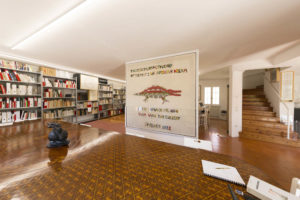 Fondazione Bonotto: Biblioteca (Foto: Nicola Righetti)
Fondazione Bonotto: Biblioteca (Foto: Nicola Righetti)
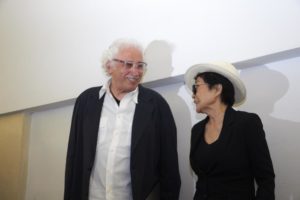 Luigi Bonotto e Yoko Ono durante la cerimonia di nascita della Fondazione Bonotto; Ca Badoer, Venezia, Giugno 2013 (Foto Mario Bozzetto)
Luigi Bonotto e Yoko Ono durante la cerimonia di nascita della Fondazione Bonotto; Ca Badoer, Venezia, Giugno 2013 (Foto Mario Bozzetto)
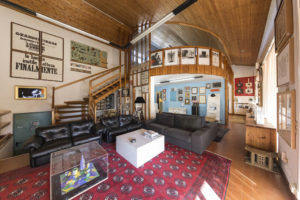 Fondazione Bonotto: Lounge (Foto Nicola Righetti)
Fondazione Bonotto: Lounge (Foto Nicola Righetti)
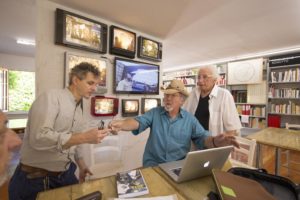 Fondazione Bonotto: Luigi Bonotto e Patrizio Peterlini al lavoro con Julien Blaine (Foto Fondazione Bonotto)
Fondazione Bonotto: Luigi Bonotto e Patrizio Peterlini al lavoro con Julien Blaine (Foto Fondazione Bonotto)
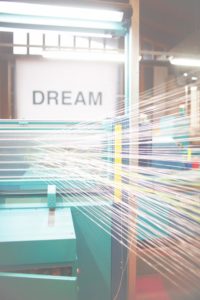 Bonotto Spa: Reparto orditura con l’opera DREAM di Yoko Ono (Foto Alain Chies)
Bonotto Spa: Reparto orditura con l’opera DREAM di Yoko Ono (Foto Alain Chies)
 Da sx: Dick Higgins, Luigi Bonotto, Allan Kaprow (Foto Collezione Luigi Bonotto)
Da sx: Dick Higgins, Luigi Bonotto, Allan Kaprow (Foto Collezione Luigi Bonotto)
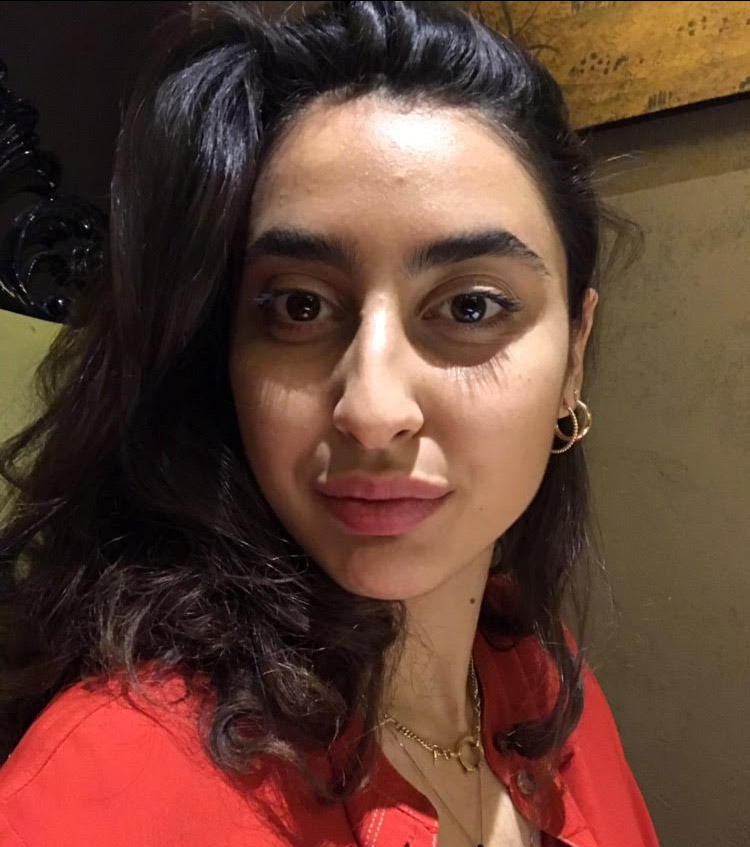
Vanessa Ignoti (1993) graduated from the Fine Arts Academies of Venice and later Milan, respectively in Decoration and Cinema and Video, went through a course of studies and interest from publishing to New Technologies. With experience in the management and organization of exhibitions and art projects, she focuses her interest on communication and theory of art.


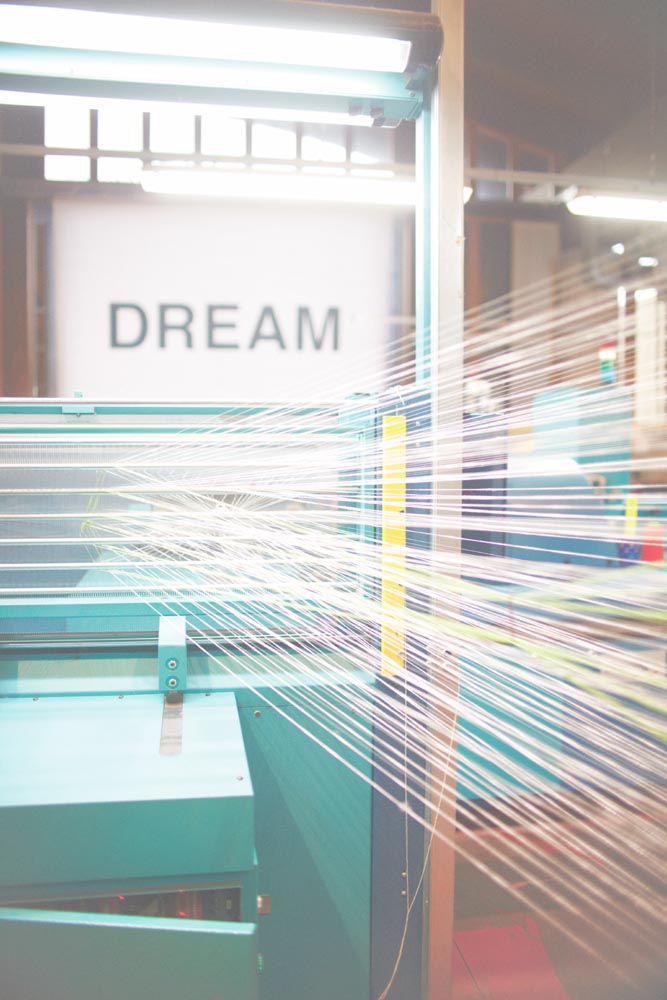

NO COMMENT